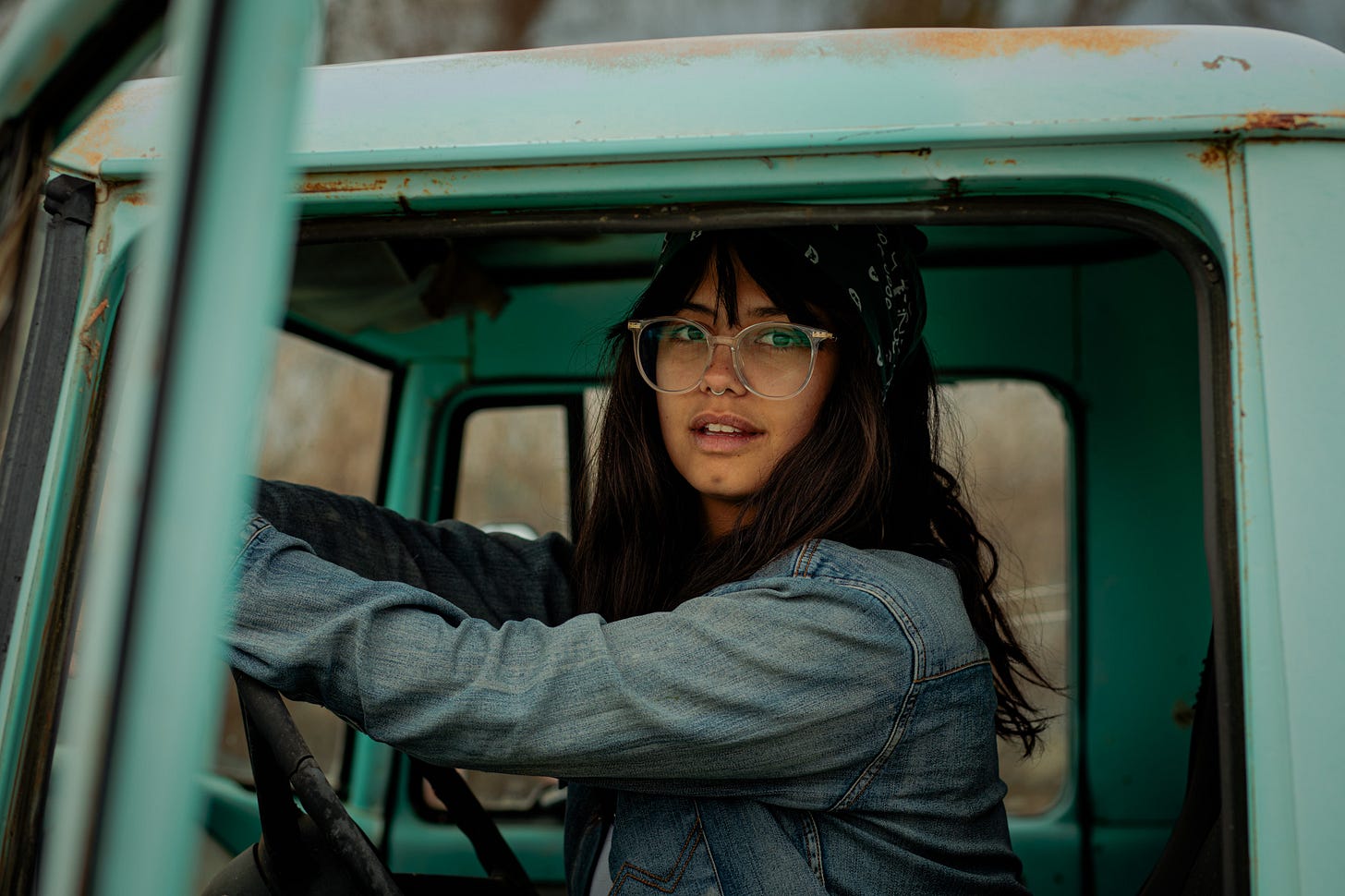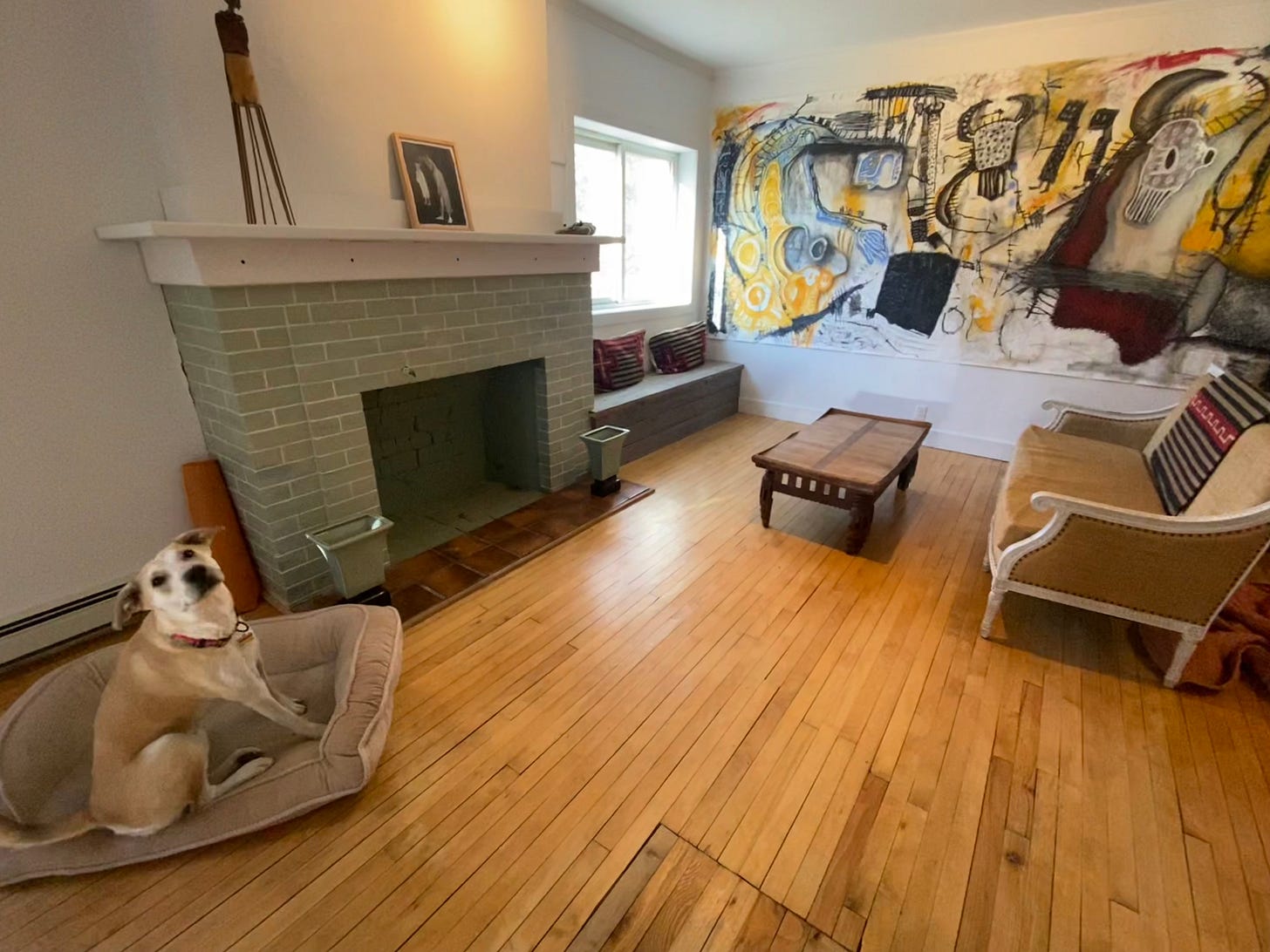I have been craving still life. All around me is movement, and all I want is to be still. It’s an odd thing to wake before the rooster, in a strange house, in a strange town where there even is a rooster. It’s my first morning of a four-month residency at the Dofe House. I am the third artist-in-residence at a burgeoning program founded by Juni Clark, who owns and operates Aunt Dofe’s Gallery in Willow Creek, Mont.
Less than 250 people call Willow Creek their home. The town is six miles from Three Forks on the western edge of Gallatin County and 39 miles southwest of Bozeman. There’s duty here, and in this rich agricultural valley it’s time for the harvest. I arrived here as the westerly sun blazed through my windshield. I could see the billowing dust highlighted in gold as the combines dropped neat squares of wheat across the land. The light here is God-like, sunsets that enforce the beauty of being still and in awe.
This was prairie land before it was anything else. To love the prairie is to love the soul of a place, to register such expanse as a vast ecosystem. This land, now, is a pulse of Montana, a part claimed for crops and cattle, for feeding us all.
Peyton Cole taught me about harvesting. She’s 25 and reinvigorated a harvest festival in her hometown of Chester, Mont., on the Hi-Line.
“Agriculture is the absolute foundation of everything,” Cole said during our interview for the Montana Free Press. “It doesn’t matter if you farm or not or live in a city or a rural town. We all get our food somewhere, and if it weren’t for these family farms and ranches, we wouldn’t have this food.”
Cole didn’t consider where her food comes from until she started farming and ranching herself. She grew up poor in an agriculturally rich community and couldn’t wait to leave it. It was upon returning home during the COVID-19 pandemic that she found her soul’s calling in the soil.
“I will say that I lived my best life on the farm, and it happened to be during COVID, and so many people did not live that reality,” Cole said. “So many people had the worst time and lost family members and were cooped up in apartments when I got to be outside in thousands of acres, working the land. It’s wild to think about.”
I haven’t considered harvest time, outside of my own gardening efforts. I overplant, just like I overpack, and from this excess I have learned the hard lessons of waste. Perhaps it was my grandfather who said, “haste makes waste,” and passed that saying onto my mother. I did not take that advice to heart. I raced to get to this residency, raced to pack my house, raced to harvest my garden, and in that haste left fruit languishing on the vine.
Anne Sexton described this phenomenon in “The Black Art,” whose central characters are writers.
Our hands are light blue and gentle
Our eyes are full of terrible confessions.
But when we marry,
the children leave in disgust.
There is too much food and no one left over
to eat up all the weird abundance.
It’s times like this that I am rewarded for being an overpacker, however, because I have Anne Sexton’s book of complete poems within reach, as well as an excess of other poetry books that perhaps I will read in my four months here. Regardless, it’s nice to be in good company.
These buildings are rich with good company. Aunt Dofe’s gallery has featured many of Montana’s contemporary artists this summer, and the residence building is adorned with artworks. I recognize the hand of Jon Lodge and Sean Chandler, but there are many other works by artists I hope I will come to know by their brush strokes and clay fingerprints during in my time here.
Since purchasing the gallery, originally called Aunt Dofe’s Hall of Recent Memory, and surrounding properties several years ago, Clark and her husband Ray have been expanding the footprint of this contemporary art hub in a town with minimal services beyond a saloon and supper club across the street.
Aunt Dofe is an illusive figure (by Internet standards), and I hope to know her better. What I do know is that Dave Kirk, Dofe’s nephew, purchased the 1903 mercantile building with inheritance money he received after his aunt died, and he named the building in her honor. He converted the property into his residence, woodworking studio, and art gallery and operated the business until his sudden death in November 2015, when Aunt Dofe’s Hall of Recent Memory closed.
Kirk, honored with the Artist’s Innovation Award from the Montana Arts Council, was a beloved figure in the Montana arts community. He was also a fan of the Museum of the Bench in Abilene, Texas, so friends and fans raised funds to place a bench engraved “In memory of Dave Kirk / He built things” near the pond facing Willow Creek at the Gallatin Regional Park in Bozeman.
Aunt Dofe’s Hall of Recent Memory was known for its “warm, yet raw and unusual feel that set it apart from the usual stuffy and uptight feel of most art galleries,” wrote Bozeman Magazine’s Keith Martinez in 2019.
Clark, in a conversation with Martinez, described Dave’s vision of buying a building in Willow Creek as “pure genius.”
“There is something so special, unique, and, transformative about the tiny town of Willow Creek,” Clark said. “First, the contemplative, gorgeous drive to get there. The 1903 building with its plaster walls, vintage wood floors, high, tin ceilings and large open spaces works beautifully for this purpose, and the incredible individuals of [Willow Creek] and the saloon across the street certainly contribute to the rich experience.”
Clark was first attracted to the area to try the saloon’s legendary ribs and became a regular patron of Aunt Dofe’s. Clark purchased the building when it was sold at auction following Kirk’s death. "I want to keep Dave's vision and the beauty of the building," Clark told the Bozeman Daily Chronicle when she reopened the gallery in August 2019.
I have spent very little time in this part of Montana, and the region’s written history begins with Meriwether Lewis and William Clark. Mary Picket, in her 2008 writing about the area, describes how Clark, during his return trip in 1806, gave the name Philosopher's River to the willow-edged stream flowing into the Jefferson, which was later renamed Willow Creek. In the 1860s, farmers and ranchers arrived and the town expanded as a commercial center after the Northern Pacific Railroad came through in the 1880s, Picket wrote. Now, the major industry is working the land or at the talc and cement plants in Three Forks.
Before the railroads and the machinery and manufacturing, this land was cared for by the people of Indigenous nations. A Blackfeet term for the Gallatin Valley is “Ahkoto Waktai Sakum,” translated to “many come together,” as described by the Gallatin Valley Land Trust.
“For thousands of years, this land, with its generous rivers, wildlife abundance, and soils, was not claimed by any one Indigenous nation, but shared by many seasonally, including the Crow, Northern Cheyenne, Salish Kootenai, Blackfeet, Bannock, Lakota, Nez Perce, Flathead, Shoshone, and Snake tribes,” the trust describes in its land acknowledgement. I am sure my friend and Montana’s new Poet Laureate Chris La Tray could illuminate more on land acknowledgments, but for now I will leave this here.
Today, I have written with the rising sun, a promise I made to myself.
Now, to unpack …
Peaches, my rescue pup, is also an early riser. Sean Chandler’s work is pictured in the background. I was first introduced to this piece at Kirks’ Grocery, Chandler’s contribution to “Extraction” and a personal excavation of his life and Aaniiih heritage.






